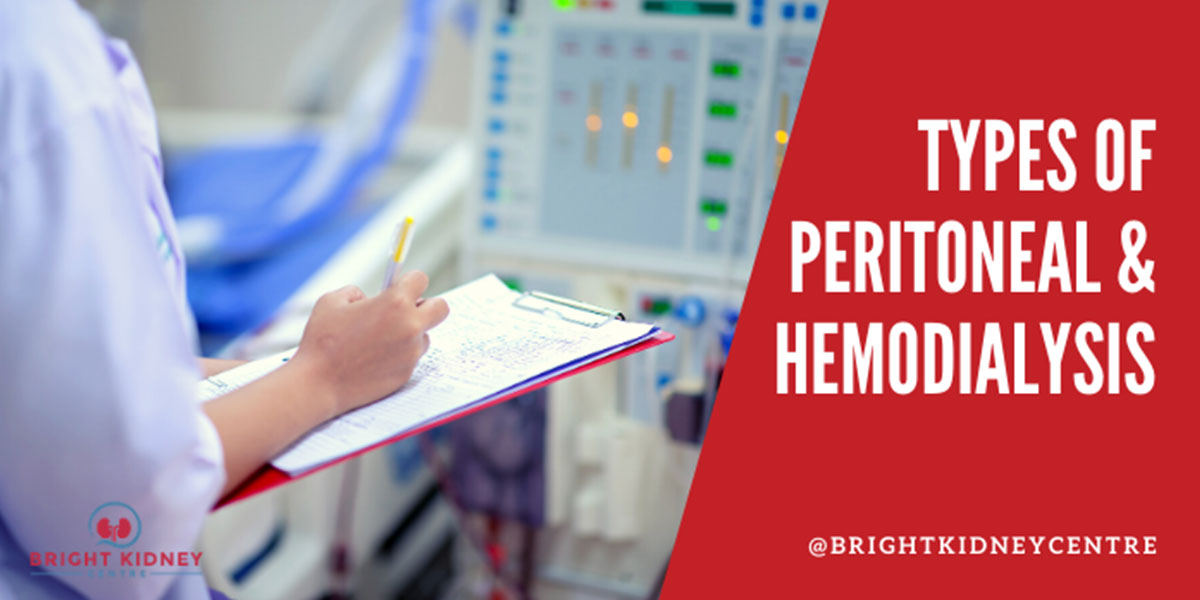Dialysis is a procedure done to remove toxins and excess fluid from the blood and correct electrolyte problems when the kidneys cannot function properly. We at Bright Kidney Centre offer these types of dialysis. There are two different types of dialysis – Hemodialysis and peritoneal dialysis.
Types of Dialysis
Hemodialysis is a procedure where a dialysis machine is used as an artificial kidney to remove toxins and excess fluid from the blood when the kidneys cannot function properly. It has to be carried out about 2 to 3 times a week depending on your kidney function and is usually done in a dialysis center.
Peritoneal dialysis is a type of dialysis which uses the peritoneum,which is a layer that covers the intestines in a person’s abdomen .It acts as a membrane through which fluid and dissolved substances are exchanged with the blood.

There are two kinds of peritoneal dialysis: Continuous Ambulatory Peritoneal Dialysis (CAPD) and Automated Peritoneal Dialysis (APD)
What to Know About Hemodialysis
Hemodialysis cleans the blood by cycling your blood through a machine that removes waste and toxins. It then returns the blood to your body.
- Hemodialysis requires an access portal which is called fistula . A fistula requires minor surgery, usually in your arm, to connect an artery and a vein. The access will be ready in 8-10 weeks depending on the type of fistula
- We can place the hemodialysis access portal via any available artery and vein in the upper limbs. Our surgeons evaluate you to determine the best place for creating fistula
- While you wait for your permanent access, you may have a temporary catheter (tube), often in your neck. Some people on shorter-term dialysis only have temporary access. It is very important to follow the guidelines given to you to keep your catheter clean to avoid infections.
- A dialysis machine and a special filter wash away waste products and remove excess fluid from your blood and then return the blood to your body.
- You usually will receive dialysis in a hospital setting, called a dialysis unit. Most patients come to dialysis 3 times a week.
What to Know About Peritoneal Dialysis
- You will need a surgery where the surgeon places an tube into the lining of the abdominal wall. You can use this access in about two weeks.
- You will be able to perform peritoneal dialysis without having to come into a hospital Instead, you can do dialysis at home
- In peritoneal dialysis, you fill your peritoneal cavity – the open spaces in the abdomen – with special cleansing dialysis fluid and drain it again. The fluid cleans your blood of the toxins through the membrane which lines your abdomen.
For further detailed information about dialysis and how it is delivered and which one is suitable for you please visit our dialysis patient education section and for appointments call 9550588544 or reach us at brightkidneycentre@gmail.com

Leave a Reply